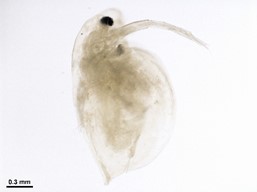Using DNA barcoding to inventory and track changes in the distribution and diversity of freshwater invertebrates in the Canadian Arctic
Authors
- D. Nowosad, University of Guelph, Guelph, Ontario, Canada, and Polar Knowledge Canada, Canadian High Arctic Research Station, Cambridge Bay, Nunavut, Canada, dnowosad@uoguelp.ca
- I.D. Hogg, Polar Knowledge Canada, Canadian High Arctic Research Station, Cambridge Bay, Nunavut, Canada
- A. Borisenko, University of Guelph, Guelph, Ontario, Canada
- S. Adamowicz, University of Guelph, Guelph, Ontario, Canada
Citation information
Nowosad, D., Hogg, I.D. and Adamowicz, S. 2020. Using DNA barcoding to inventory and track changes in the distribution and diversity of freshwater invertebrates in the Canadian Arctic. Polar Knowledge: Aqhaliat Report, volume 3, Polar Knowledge Canada, p. 15–17. DOI: 10.35298/pkc.2020.04.eng
Article
Freshwater biodiversity in the Canadian Arctic Archipelago and its post-glacial recolonization history have received considerable attention from researchers. However, much of this work pre-dates the introduction of genetic techniques, such as DNA barcoding, to accurately determine species identification. As a result, there are gaps in our understanding of the distribution and diversity of many aquatic organisms. At local scales, there is limited information available on the site-specific composition of invertebrate communities and their responses to biotic and abiotic factors, such as geochemistry of water bodies, seasonal patterns, and long-term climatic changes.
This study will use DNA barcoding to provide local-scale baseline biodiversity genomic data on freshwater zooplankton and benthic invertebrates at sites near Iqaluktutiak, Cambridge Bay, as part of the larger Arctic BIOSCAN (ARCBIO) project. During the summers of 2018 and 2019, water bodies of different sizes were surveyed in the vicinity of the Canadian High Arctic Research Station (CHARS), Victoria Island, and Nunavut, using "D-nets" and plankton tows (Figure 1). In the 2019 season, a total of 75 samples were collected, representing a wide diversity of aquatic arthropods – insects and crustaceans (Figure 2). DNA barcoding of samples is currently underway, with over 2,000 sequences being added to the Barcode of Life Data (BOLD) systems library from the 2019 season alone. A comparison with available reference data from other areas in the Arctic and Boreal zones of the Holarctic will provide information into similarities and connectivity between Victoria Island and other regions in the Arctic.
Through the assembly of a DNA barcode library for freshwater species collected from the vicinity of the CHARS campus, we can determine changes in community composition over time and detect the arrival of new or invasive species. The 2020 summer season's efforts will involve a detailed study of the species present at each sampling location as well as the physical and chemical characteristics of the surveyed bodies of water. This will allow us to assess which environmental factors affect community composition and habitat occupancy by aquatic invertebrate species in the context of the region's post-glacial history and on-going environmental changes.
This study is important to the local community because of increasing nearby activities such as shipping, tourism, and other industries. Beyond increasing our understanding of which species are present, invertebrates form the base of the food chain on which arctic char rely. Char is an economically important species to locals in Cambridge Bay – a key food source and an important part of local cultural practices. Freshwater invertebrates are also known to be important environmental indicators. Without knowing the baseline biodiversity of this region, it will be difficult to determine responses in the future. With climate change comes the opportunity for new parasites, pests, and invasive species to colonize the island – without baseline data, it would be difficult to monitor these biological changes.

Figure 1: Polar Knowledge Canada summer student, Anna Grunsky, seen with a D-net (long net on the left side) and plankton net (smaller net on the right side), assists with collecting zooplankton and benthic invertebrate from a site in the August Hills near Cambridge Bay, Victoria Island, Nunavut.

Figure 2: Photo of a daphniid (crustacean) species collected from a pond near Wellington Bay, about 75 kilometres northwest of Cambridge Bay. Image by the Centre for Biodiversity Genomics photography group.
Polar Knowledge Canada
For media inquiries, contact:
communications@polar-polaire.gc.ca
Page details
- Date modified: